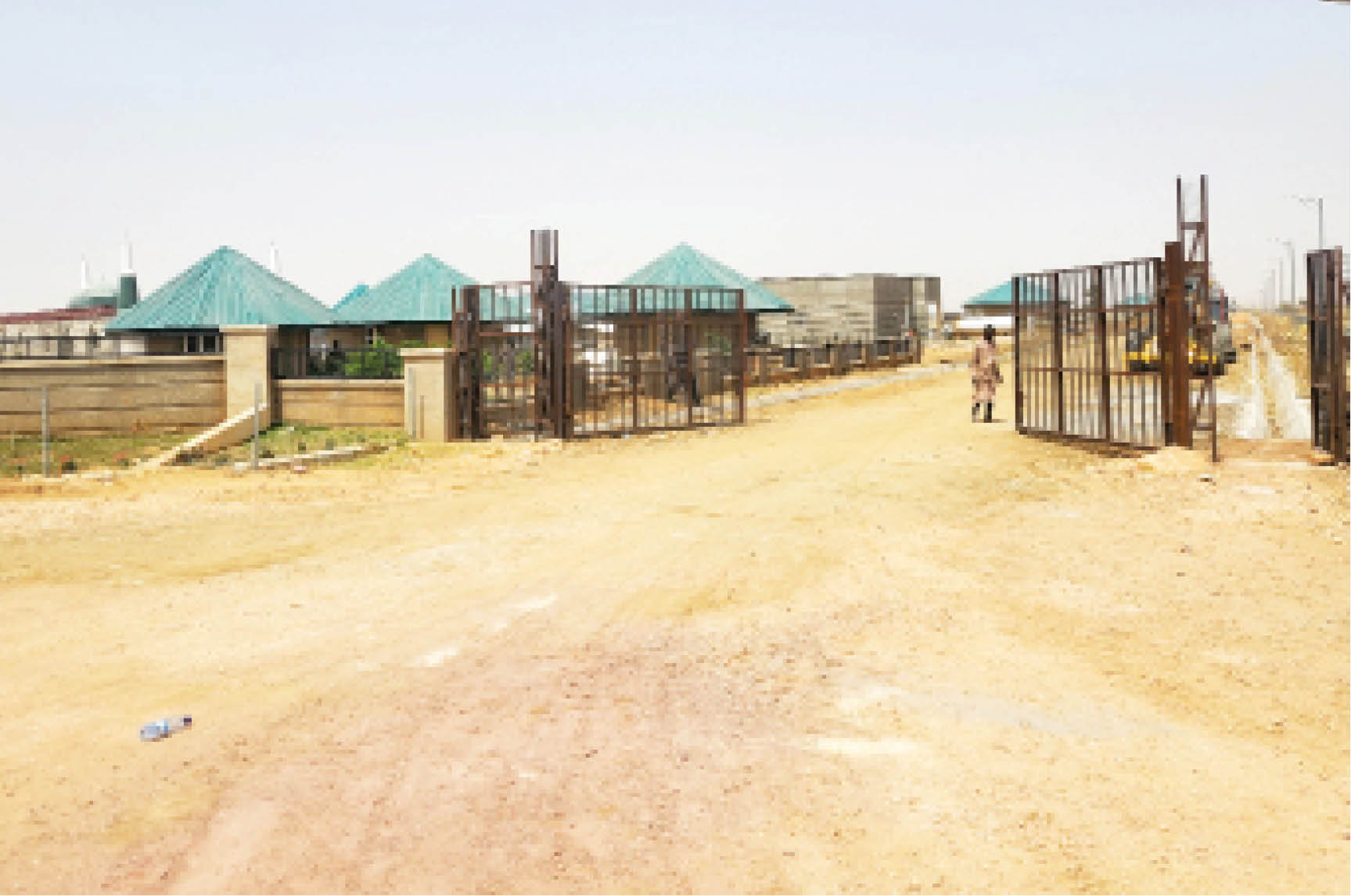The Rural Grazing Area (RUGA) project embarked upon by the Zamfara State Government to provide herders in the state with one-stop ranching facilities is envisioned to help tackle unrests related to farmers/herders and banditry in the state. Daily Trust visited the pilot site of the project in Maradun Local Government Area.
The conflict between farmers and pastoralists is age-old in most parts of Northern Nigeria. For years, farmers in rural areas routinely clash with herders, often the itinerant Fulani stock, whose herds regularly get into farms, causing loss and anguish to the farmers. This unwholesome practice usually leads to skirmishes between the two sides. In the past, such conflicts often got resolved by local leaders.
- Input of Nigerian women ‘significant, but undervalued – Tita Young
- Why Nigeria’s over 44 solid minerals contribute less to GDP – RMRDC
In recent years, however, what was no more than a storm in a tea cup has grown into a violent phenomenon. Cattle rustling, banditry and destruction of farms and related crimes have left hundreds killed on both sides and thousands more displaced from their communities.
Zamfara is one state with the most brunt from the crises between farmers and herders, which in turn have given birth to the ongoing deadly phenomenon of rural banditry.
For years, the state and federal governments have battled to tame the increasing fire of banditry using all approaches available. At the height of the problem, the Nigerian Army (NA) established 8 Division in Sokoto in 2017 to take adequate charge of security in the area. With a base in Gusau, the state capital, troops from the division take charge of the three states of Sokoto, Kebbi and Zamfara.
Besides the army, the Nigerian Air Force (NAF) also established the 207 Quick Response Group (QRG) at the NAF Base in Gusau. Also, only last month, the police deployed 300 anti-riot personnel as part of a renewed effort to quell banditry in the state.
While these measures were on, however, the previous and current administrations in the state piloted a number of non-military initiatives to provide a solution to the problem. This came largely in form of offering amnesty and disarming the ferocious Fulani herders who are by now well armed and have become a menace to peace and instability in most parts of the state. This intervention, however, came with varied results. Peace accords supervised by the last administration in the state collapsed twice. In frustration of the heightened insecurity, the then Governor, Abdulaziz Yari, announced relinquishing his constitutional role of Chief Security Officer (CSO) of the state.
Enters RUGA
As the heir to the banditry crisis bedevilling the state, the administration of Governor Bello Mohammed Matawalle had to join in the search for a solution. One of the first actions of the government after it came on board on May 29, 2019, was mulling the idea of establishing ranching facilities in line with the proposed RUGA initiative by the federal government which stirred a lot of controversy prior to the 2019 elections.
The Matawalle administration settled on establishing three settlements for herders; one in each senatorial district, as a way of easing the tension between herders and farmers.
The governor used the occasion of marking his 100 days in office in September, 2020, for the official foundation laying ceremony of the first of the three RUGA settlements located at Sakida Grazing Reserve in Maradun LGA. The concept was a reenactment and improvement on an old practice that has roots in colonial Nigeria when the colonialists devised means of accommodating the Fulani herders through provision of grazing reserves and routes. The first of such organised grazing area concepts dates back to 1946, according to findings by Daily Trust.
In a 2016 interview with Daily Trust , a veterinary doctor and agricultural administrator, Aliyu Ramalan (Magajin Rafin Lafia), recalled how the colonialists opted to take care of the herding communities and enforced control over them through the provision of grazing reserves.

Dr Ramalan said, “The colonial administration realised the problems of the cattle Fulani; the need to reorganise them, the need to take care of their basic requirements, especially land, where they could graze their livestock without conflict with crop producing farmers. In order to achieve this, the colonial administration tried introducing mixed farming.
“However, they realised that was not going to work because the cattle Fulani regard cattle rearing as their major occupation and would not go into crop production. By 1954, the International Bank for Reconstruction and Development (IBRD) went in to study the situation regarding the cattle Fulani and a report of that study made a clear account of the colonialists’ stand about the development of the livestock industry.
“In the report, they talked about the stabilisation of the pastoral Fulani, which was considered of major importance in the expansion of livestock production in the country. The word stabilisation may refer to reserving a particular area – that is creation of grazing reserves – so that they settle in certain areas where their production will be stabilised to build and practise their career unhindered. It was a futuristic study that intended to address a crisis situation they saw coming over the pressure on land by both pastoral Fulani and farmers.”
He further said the study considered the establishment of grazing reserves to be protected by law, where cultivation would be restricted and would be under permit, and grazing rights would be subject to supervision. In deciding on the location to site the reserves, Ramalan recalled the suitability and production indices, including agronomic and pastoral indices of water supply and scope for pastoral improvement.
The Zamfara RUGA concept, according to officials and persons working on the project, is a notch higher than just grazing reserves. It is a settlement that provides almost everything required for herders to permanently settle.
At the time of the flag off, Gov Matawalle said each of the three settlements would be fitted with 210 two and three-bedroom houses, Western and Islamiyya schools, earth dams, grazing lands and mosques. Other facilities to be provided, he said, would include police stations, 130 shops and mini markets, livestock markets, dairy collection centres, social centres, roads and drainage. The government said it would spend a total of N8.631bn for the three sites with each costing N2.877bn.
Explaining the rationale of the initiative, Gov Matawalle said it was for government to get the herders “something that will engage them. The initiative is a very nice concept with schools to enroll their children; veterinary clinics, abattoirs, modern markets, mini stadiums and water canals that can be used for irrigation during the dry season and water dams. This concept was done to maintain and contain them in one place. By the time they have the social amenities, they will be able to stay in one place.”

Architect Kwagga Dlama Zira Eliphelet, the project’s manager, in an interview with Daily Trust on Sunday, explained that the model comprised 23 items, with a road network in the ranch which was on 2,218 hectares.
Arc Eliphelet said, “The pilot phase started with about 100 hectares, but due to natural formations, it took about 300 hectares. That is for housing and other structures, but we expect it to take almost the entire place because of pasture production.”
He explained that the site was designed to have water reticulation which served about 27 kilometres with a water storage facility, four 250,000-litre overhead and four surface tanks.
Eliphelet further said the state government acquired a pivot sprinkler system and that provision was also made for solar-powered industrial boreholes with eight taps attached to each and 10 hand-operated boreholes.
He explained that, “We also have health facilities, including a Primary Healthcare Centre (PHC) with a 30-bed capacity, and theatres, Outdoor Patient Department (OPD) and a nursery for delivery which is attached to the maternity. There is the veterinary clinic which has the capacity to accommodate about 1,000 herds within its own confines. And it has its own theatre and isolation rooms, including 12 paddocks.
“There are markets with open and closed stalls and abattoirs. But in the context of a Fulani man, he does not kill his animal in his environment, so he takes it to a far place to slaughter, so the abattoir is located outside the ranch. The abattoir is going to be in Maradun Town.”
The Special Adviser to Governor Bello Matawalle on RUGA and Livestock Development, Alhaji Abubakar Abdullahi Maradun, told Daily Trust that the initiative was conceived as a means of minimising conflict between farmers and herdsmen and that the settlement would also help domesticate the pastoralists and stop them from moving down South in search of pasture.
Alhaji Maradun said, “Going to the South is no longer practicable, and it involves a lot of danger because they cannot escape having cattle stray into farms. The cattle routes are largely encouraged, in many places there is no more than 20 per cent of the routes left, or none at all. This, therefore, makes movement of cattle a tedious exercise.”

A visit to RUGA
Our reporter visited the Sakida Grazing Reserve near Ranji in Maradun LGA recently. The area was originally gazette in 1982 as a grazing reserve. It is the first of the three sites designated for the new RUGA settlement. Two other locations have been earmarked for similar projects: 36,200 hectares at Gidan Jaja in Zurmi LGA and another at Dantsado in Kuyambana Forest.
Here, work was flagged off on September 4, 2021, by the Sokoto State Governor, Aminu Waziri Tambuwal, as indicated on a plaque at the entrance of the site. From the gate one can see the green minaret of a modest mosque which lies to the left. The mosque, according to the site engineer, Ada Reuben, has the capacity to accommodate 300 worshippers at a time. Just before the mosque is a block of four classrooms intended to serve as Islamiyya for the children of the herders.
The residential part of the facility contains 210 plots, each measuring 2,400 square metres, and are divided into four. 600 square metres is given for the living area where modern houses have been built in using traditional hut design. The other three are divided, fenced and demarcated, with each paddock having a gate. The paddock is designed in a way that the cattle can be herded in from the front of the house, while a small gate is to provide members of the household access in and out of the paddock.
Of the 210 demarcated plots, about 55 are being built by the developer, mainly three and two-bedroom houses. The living rooms and all the bedrooms have been tiled and painted. The rooms are en suite, with a squat toilet system linked to a soak away for each house. The rest of the plots are reserved for interested persons willing to settle down in the facility to come forward for allocation and development according.
For coordination and leadership, provisions have been made of special houses for leaders of this future community. A five-bedroom house for an appointed leader who is expected to provide leadership and support security agencies who are represented by way of a police outpost stationed close to the main gate.
As pasture and water are the most important requirements for a herding community, the SA on RUGA and Livestock said the government was shopping for an all-season grass that was also compliant with the climatic condition of the area.
He said six varieties of possible pasture had been identified for testing to select the best ones. The shortlisted pastures, he said, comprised three legumes and three grass varieties.
For water, Alhaji Maradun said work on an earth dam would soon commence to provide a more permanent source of water.
He explained that, “We are aware of the challenge of underground water in these areas, because in many places you have to go as far as 170 metres before you get water for a borehole. That was why we felt the best way is to introduce earth dams. Since we have streams around the area, it will complement it, and very soon the ecosystem will change, and with water and pasture, you don’t need to invite any herdsman.”
Daily Trust reporter who visited the settlement witnessed work at advanced stage at a clinic which, according to the site engineer, has 30 beds and an operation theatre. At another location, work was also at an advanced stage at a veterinary clinic. The two facilities, Engineer Reuben said were provided to ensure the well-being of the pastoralists and their cattle.
Some residents of neighbouring villages interviewed by our reporter expressed optimism that the initiative could bring positive development and peace to the area. Two residents of Ranji serving as labourers on the site expressed delight that in addition to helping solve a local problem that for years affected their community, the siting of the project was helping them make a living from working on the site.
According to Arc Eliphelet, when completed, the three facilities will not only help in engendering peaceful coexistence among herders and farming communities, but would aid spurn economic growth in the area.
He said, “The project is a bargaining chip for peace so that the economy would thrive. When we started work, we were told that before Gov Matawalle came into office, the rate of banditry made the state inaccessible, but he was able to broker peace.
“We have phases one and two. Phase one is to provide the basic amenities in bringing the herders back into a cluster. The economic benefits are that it will attract investors from all over the world. It will bring the production of meat, which in turn provides revenue. It will open job opportunities for veterinary doctors, agricultural extension workers, companies that can come in to engage in milk, cheese and manure production, biogas, bone processing, hide and skin processing, animal feed from blood, in combination with other ingredients, then pasture production from farmers.
“The incessant farmers/herders crisis has eaten into the fabric of this country and contributed to the division we are experiencing. The farmer needs to produce what the herder would use as raw material, just as the cow dung is manure for the farmer.”
The Zamfara State Government expects to house between 15,000 and 20,000 cattle in this facility, aside other smaller ruminants. The success of the RUGA project, however, would be determined only to the extent to which those the project is intended for embrace it. It is also left to be seen if this strategy, as widely advocated by experts on conflicts and pastoralism, will calm the restive nerves of warring herders and farmers in the long-term.
The long search for a solution to the problem of the pastoralists in Nigeria may not yet be over, especially at a time when violence associated with the ethnic Fulani is on the rise. But experts like Dr Aliyu Ramalan believe ranching facilities like Zamfara’s RUGA settlements would go a long way in tackling the root of the unending fire of banditry and the humanitarian crisis that comes with it.

 Join Daily Trust WhatsApp Community For Quick Access To News and Happenings Around You.
Join Daily Trust WhatsApp Community For Quick Access To News and Happenings Around You.


